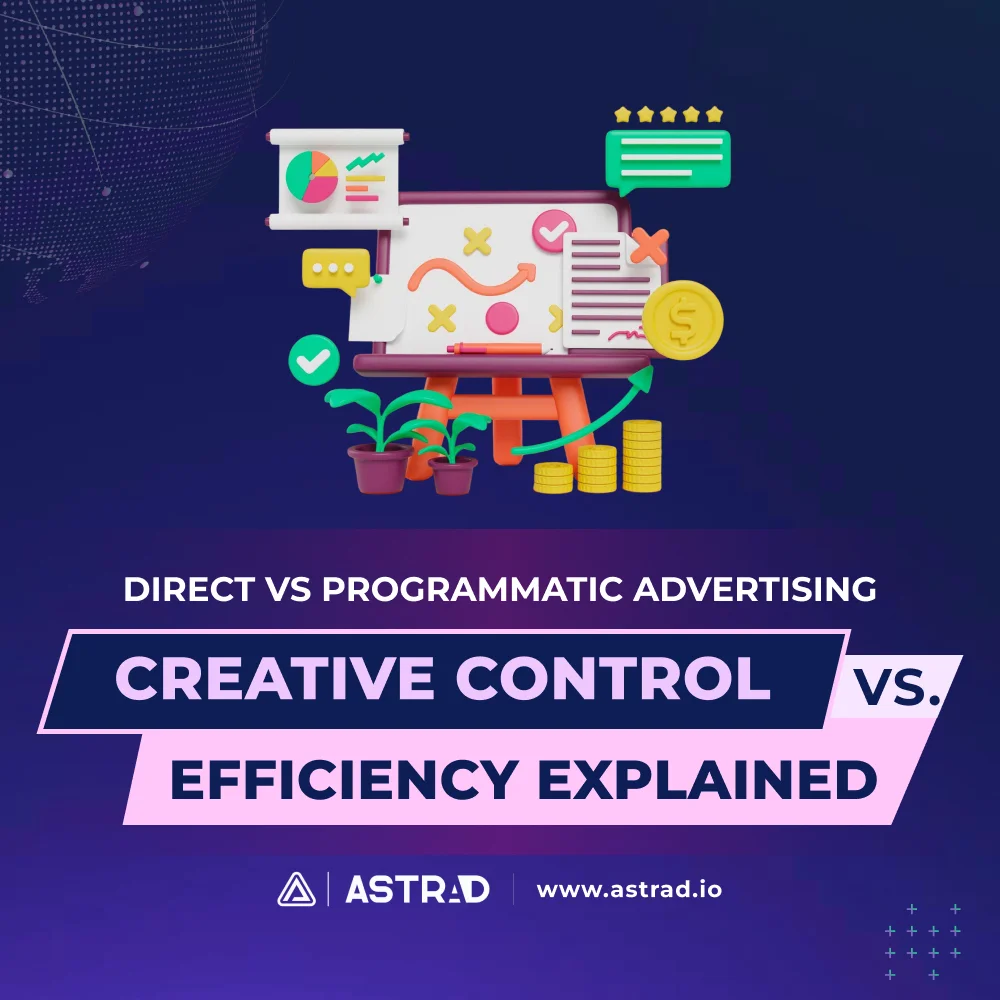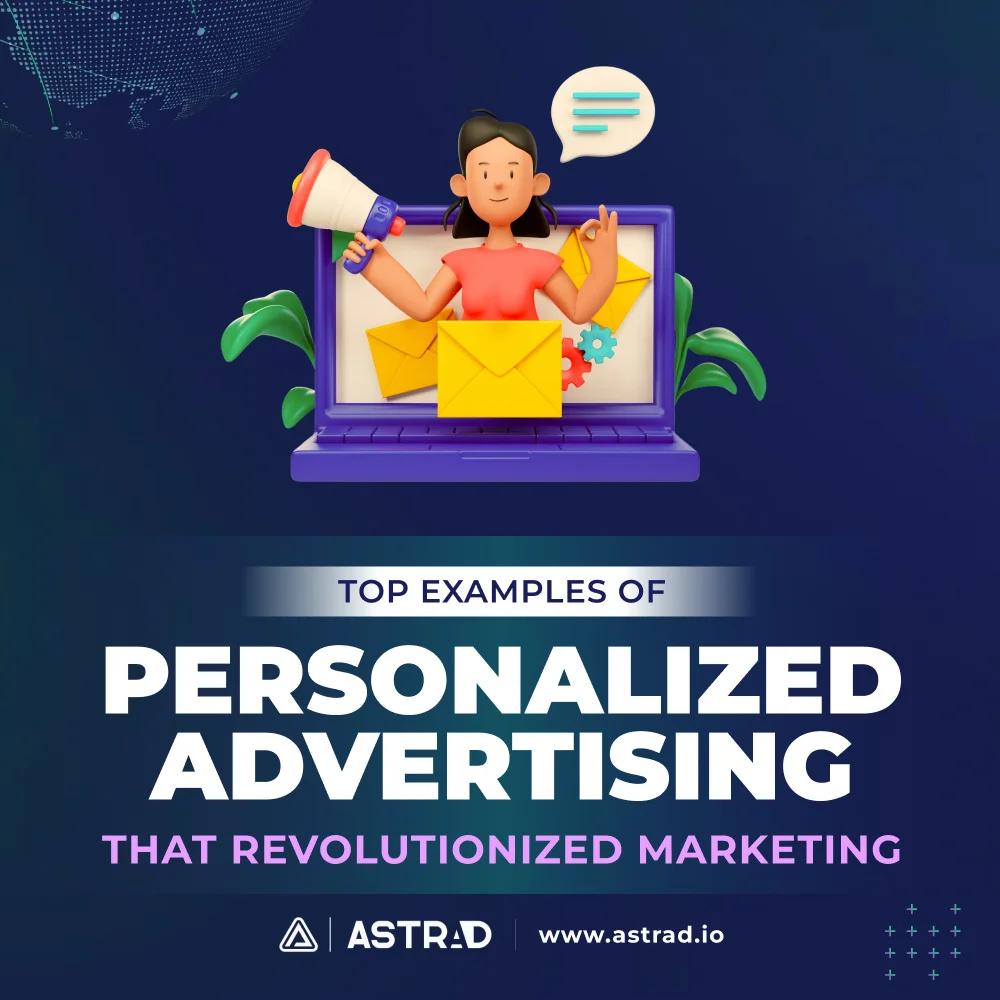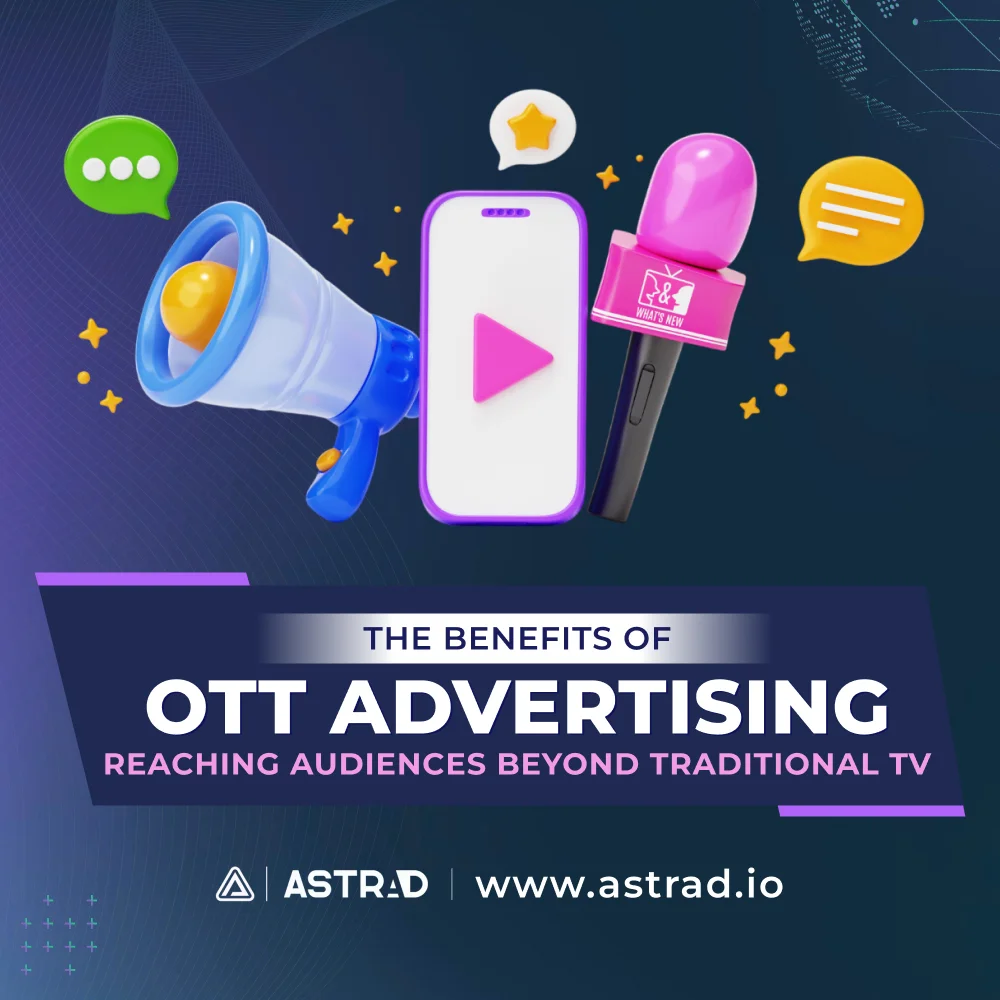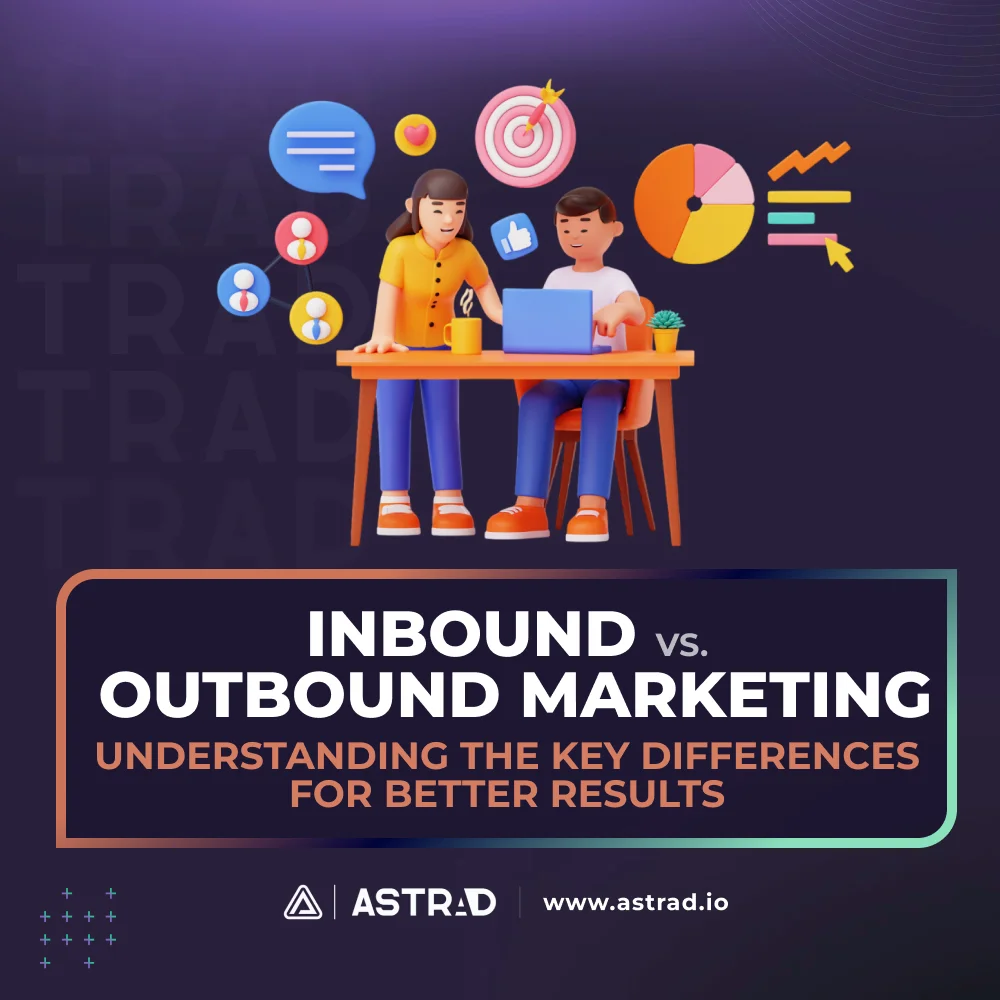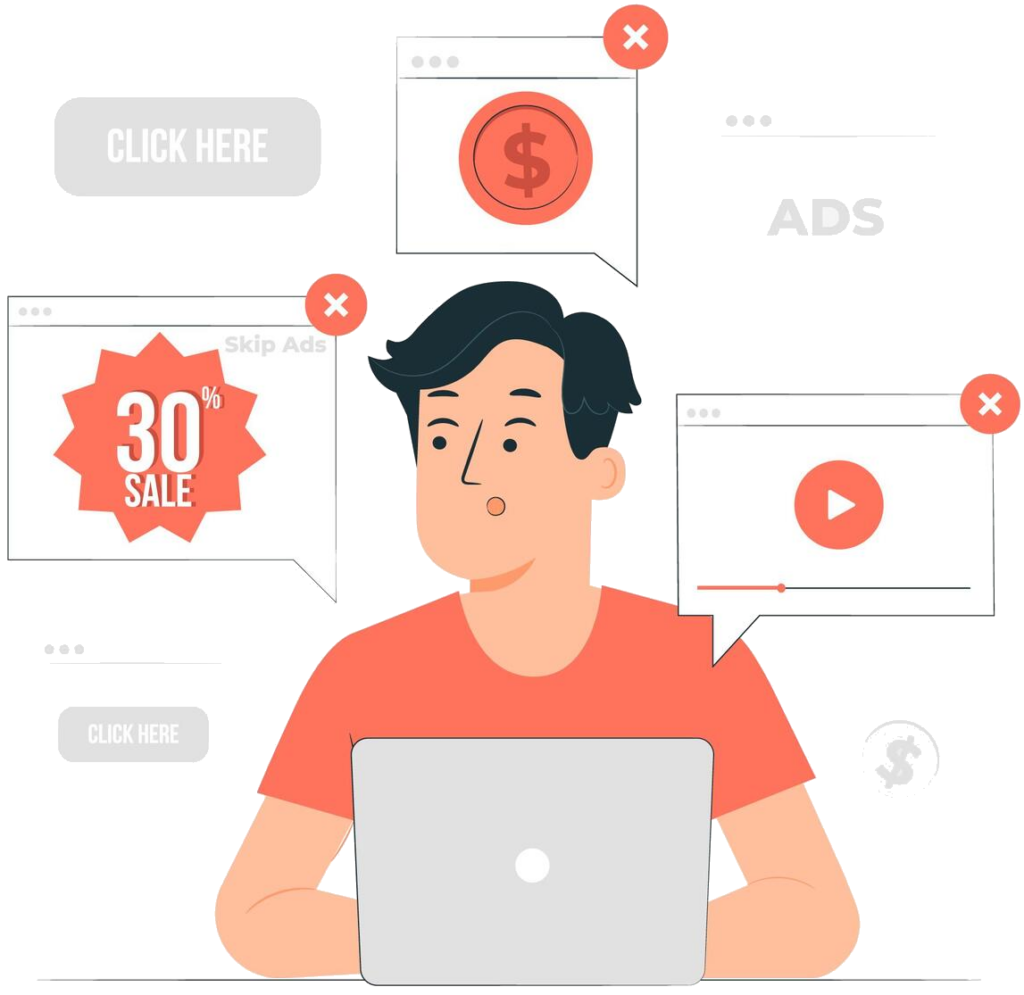You’re staring at two completely different paths for your next ad campaign. On one side, there’s the old-school handshake approach where you negotiate directly with publishers, craft every detail of your placement, and maintain total creative control. On the other hand, you’ve got the automated route that uses algorithms to buy ad space in milliseconds across thousands of websites.
Welcome to the direct vs programmatic advertising showdown. Direct advertising gives you the artisanal treatment—maximum creative freedom and personal relationships with publishers. Programmatic advertising delivers the tech solution—efficiency, scale, and data-driven optimization that no human could match manually.
Neither approach is inherently better than the other. The real question is which one serves your specific campaign goals better.
What is Direct Advertising?
Direct advertising is like being a master negotiator in the media world. Instead of letting robots handle your ad buys, you roll up your sleeves and deal directly with publishers—whether that’s websites, magazines, TV stations, or podcasts. You’re building real relationships with actual humans who control where your ads appear.
Key Characteristics of Direct Advertising
The beauty of direct advertising lies in its personalized approach. When you go direct, you’re not just buying ad space—you’re building relationships. Here’s what makes it tick:
- High Creative Control: You can work directly with publishers to create custom ad formats, negotiate specific placements, and ensure your brand message appears exactly how you envision it
- Long-term Relationships with Publishers: These partnerships often result in better placements, exclusive opportunities, and preferential treatment for future campaigns
- Fixed Pricing and Placement: You know exactly what you’re paying and where your ads will appear, eliminating the uncertainty that comes with auction-based systems
When Direct Advertising Makes Sense
Direct advertising isn’t for everyone, but it’s absolutely killer in certain situations:
- Brand campaigns that need perfect execution – When your message needs to look exactly right and appear in the perfect context
- Luxury or premium products – High-end brands that benefit from appearing only in carefully curated, exclusive environments
- Long-term brand building – When you’re playing the relationship game and want publishers to become genuine partners in your success
- Guaranteed premium placements – When you need that homepage takeover or above-the-fold placement that programmatic can’t guarantee
Understanding Programmatic Advertising
Programmatic advertising vs direct buying is like comparing a Formula 1 race car to a luxury sedan. Programmatic doesn’t mess around with phone calls and email chains. Instead, it uses seriously smart algorithms and real-time bidding to buy and place ads across thousands of websites in the time it takes you to blink.
Think of it as having an incredibly smart assistant that never needs coffee breaks. This system analyzes a user’s browsing history, demographics, and current behavior to decide whether showing them your ad right now is worth the cost, and it makes this decision in milliseconds.
The numbers tell the programmatic story perfectly. In 2024, global programmatic ad spend reached an estimated 595 billion U.S. dollars, with spending set to approach 800 billion by 2028. That’s not just growth—that’s complete market domination.
Key Characteristics of Programmatic Advertising
The magic of programmatic lies in its ability to process massive amounts of data and make intelligent decisions faster than any human could:
- Data-driven, Automated Buying: Every ad placement is based on real-time data analysis, ensuring your ads reach the most relevant audiences at the optimal time
- Wide Reach and Targeting Flexibility: Access to thousands of websites and apps through ad exchanges, with the ability to adjust targeting parameters on the fly
- Cost Efficiency and Scalability: Automated bidding ensures you never overpay for placements, while the system can instantly scale campaigns up or down based on performance
When Programmatic Advertising Dominates
Programmatic is your secret weapon when efficiency and reach matter most:
- Performance marketing campaigns – When you need to drive specific actions like clicks, downloads, or purchases
- Limited budgets requiring maximum ROI – The system’s optimization means every dollar works harder
- Testing different audiences quickly – You can experiment with targeting parameters and get results fast
- Multi-touchpoint campaigns – Perfect for reaching users across their entire customer journey
- Real-time optimization needs – The platform learns and improves with every interaction
Direct vs Programmatic: The Ultimate Showdown
So, which approach actually delivers better results? It’s not that simple. Both have their strengths, and the “winner” depends entirely on what you’re trying to accomplish. Let’s break down the key areas where these two approaches duke it out.
Creative Control: Artisan vs Assembly Line
Direct Advertising: Total Creative Freedom
When it comes to creative control, direct advertising is like having your own personal design studio. You work hand-in-hand with publishers to create custom ad formats that align perfectly with your brand vision. Want a full-page takeover with interactive elements? Done. Need your ad positioned next to specific content? No problem.
This collaborative approach often results in more polished, contextually relevant advertising that feels natural on each platform. Publishers contribute their own insights about what works for their audience, making your ads more effective.
Programmatic Advertising: Standardized but Scalable
Programmatic vs direct advertising shows its creative limitations pretty clearly. The system relies on standardized ad formats and templates because everything needs to work across thousands of different websites automatically. Your creative assets need to fit predetermined specifications, and the algorithm makes placement decisions based on data, not creative context.
But this standardization isn’t necessarily bad news. Your ads work consistently across multiple platforms without requiring custom work for each placement.
Efficiency and Reach: Relationships vs Speed
Direct Advertising: The Long Game
Direct advertising operates on human time, not internet time. Negotiations take weeks, implementations require back-and-forth emails, and changes need manual approval. But this slower pace builds something valuable—lasting partnerships that pay off across multiple campaigns.
The efficiency advantages include:
- Access to premium inventory that’s not available through automated channels
- Strategic partnerships that improve with each campaign
- Quality over quantity approach to placements
- Insider knowledge about what works best on each platform
Programmatic Advertising: Lightning Fast Operations
For pure operational speed, programmatic is in a completely different league. Campaigns launch in hours instead of weeks, targeting adjusts automatically, and the system optimizes performance without any human babysitting. The reach is virtually unlimited—millions of websites and billions of users worldwide.
The platform handles everything from finding your audience to optimizing bids and testing creative variations. It’s like having an entire media team that processes information at superhuman speed and never takes breaks.
Cost-Effectiveness: Premium vs Smart Spending
Direct Advertising: The Premium Investment
Direct advertising typically demands higher upfront investments with fixed costs regardless of performance. But those higher costs often translate to premium placements, guaranteed impressions, and package deals that provide long-term value.
The cost structure is predictable—you know exactly what you’re spending and what you’re getting. This makes budgeting straightforward, but can mean paying for impressions that don’t drive results.
Programmatic Advertising: Optimized Budget Allocation
Programmatic platforms excel at squeezing maximum value from every dollar through real-time bidding and performance-based spending. The system only bids what an impression is worth based on achieving your goals, which can result in significant savings compared to fixed pricing.
Budget flexibility advantages include:
- Start small and scale successful campaigns without long-term commitments
- Pay only for valuable impressions that match your target criteria
- Real-time cost optimization based on performance data
- Flexible budget allocation across different audience segments
Audience Targeting and Data Utilization
Direct Advertising: Publisher-Dependent Targeting
Your targeting capabilities in direct advertising are largely limited to what the publisher can offer. While many premium publishers have sophisticated audience data, you’re essentially borrowing their insights rather than leveraging your own data ecosystem.
This can actually be an advantage when publishers have exclusive access to highly valuable audience segments that aren’t available through programmatic channels.
Programmatic Advertising: The Data Powerhouse
This is where programmatic advertising truly shines. The ability to layer multiple data sources—irst-party data, third-party data, behavioral data, contextual data—creates targeting capabilities that are impossible to match through direct relationships.
Real-time optimization means the system learns from every interaction and continuously improves targeting accuracy throughout the campaign lifecycle.
The Targeting Champion
For precise, data-driven audience targeting, programmatic advertising is the undisputed winner.
Choosing Your Advertising Path: Direct or Programmatic?
The decision between direct and programmatic advertising isn’t about picking sides in some marketing battle. Both approaches have their place in smart marketing strategies, and the most successful campaigns often blend elements of both.
Think about your specific goals and constraints:
- Choose direct advertising when brand control, creative customization, and premium placement matter more than scale and cost efficiency
- Go programmatic when you need maximum reach, precise targeting, and performance optimization at scale
- Use both strategically – direct for flagship brand campaigns and premium placements, programmatic for performance marketing, and broad reach
The advertising world keeps changing, so what works today might need tweaking tomorrow. Stay flexible, test both approaches when possible, and let actual results guide your media buying decisions rather than getting locked into one philosophy.

